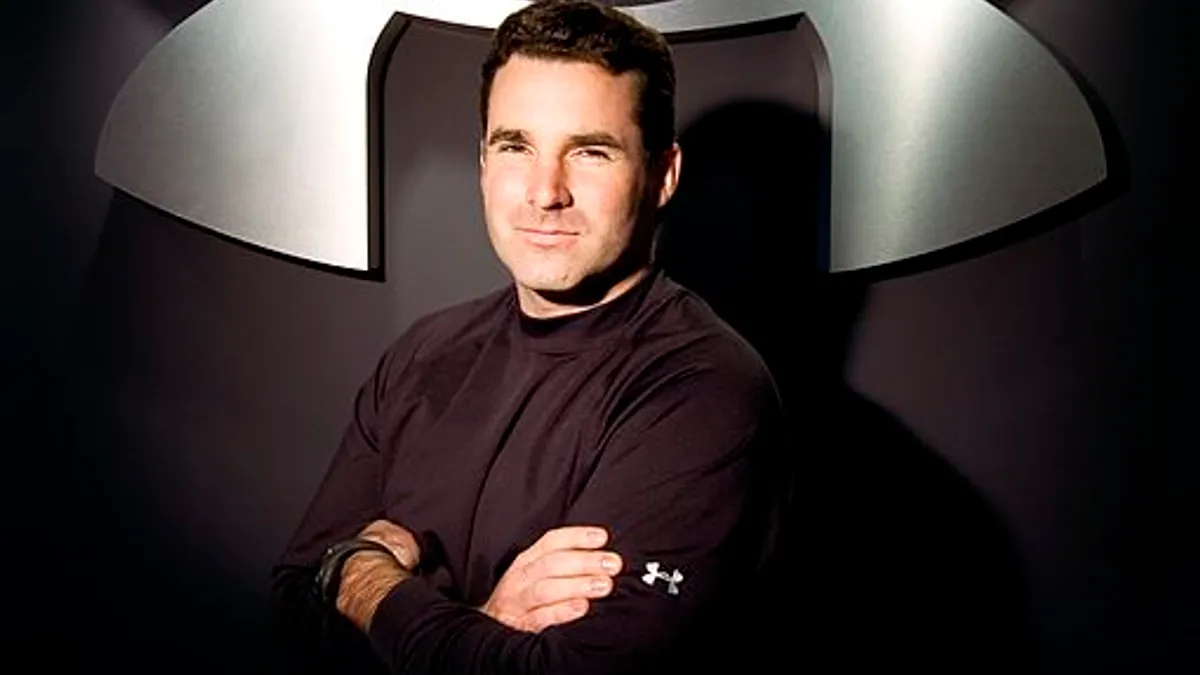Dive Brief:
-
Under Armour on Thursday reported that second quarter revenue rose 8% to $1.2 billion (7% currency neutral). Wholesale revenue rose 9% to $710 million and direct-to-consumer revenue rose 7% to $414 million. Direct-to-consumer sales represented 35% of global revenue in the quarter, according to a company press release.
-
Like Nike in its most recent quarter, the sports brand recovered somewhat at home. Revenue in North America rose 2% to $843 million (1% currency neutral) as its international business continued to deliver strong growth, with a 28% increase to $302 million (24% currency neutral), representing 26% of total revenue. By region abroad, revenue in Europe, the Middle East and Africa rose 31% (25% currency neutral), in Asia-Pacific 34% (28% currency neutral) and in Latin America 7% (12% percent currency neutral).
-
Operating loss in the quarter was $105 million, and adjusted operating loss was $20 million. Net loss was $96 million or $34 million adjusting for the impact of the company's restructuring plan. Restructuring and impairment charges were $79 million, the company said.
Dive Insight:
Under Armour is making some fundamental changes to its operations, including paring down inventory and tying its products more closely to consumer demand, but rising costs promise to make that more difficult.
"Total liabilities are up by 24% over the prior year, including an increase in current liabilities," GlobalData Retail Managing Director Neil Saunders said in an email to Retail Dive. "Looking ahead the burden from sponsorship arrangements, which is far higher for Under Armour than for most sporting brands, and an increase in store rent costs will put further pressure on both profits and the balance sheet."
This year, the company expects to incur up to $155 million in cash-related charges, including up to $75 million in facility and lease terminations and up to $80 million in contract termination and other restructuring charges, plus up to $55 million in non-cash charges, including up to $20 million of inventory related charges and up to $35 million of asset related impairments.
But the company has wider issues, with an assortment that has more and more customers "confused about Under Armour's proposition," Saunders said.
"The brand needs to have a much clearer identity — possibly by using sub-brands — to gain wider acceptance and grow customer numbers," he said. "The brand issues are exacerbated by the distribution strategy. While Under Armour professes to be a higher-end performance brand, its shift from the specialist, full-price channels into mid-range retailers like Kohl's suggests otherwise."
Indeed, UA is operating more like a wholesaler "with little newness to their product" than a brand with its own character, according to analysts at Jane Hali & Associates. "While their small number of stores and website have some fashion newness in footwear and apparel, this product is not widely distributed," they said in comments emailed to Retail Dive.
The company appears to be recovering at home, and revenue growth accelerated. But it's not all good news. "The bad news is that the uplift comes off the back of a very soft prior year outcome and even with the uplift, performance remains relatively weak," Saunders said. "It is clear that Under Armour has a lot more work to do — and perhaps has to spend more money — to drive a step shift in shopper opinion."















